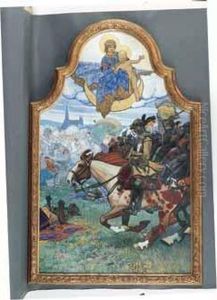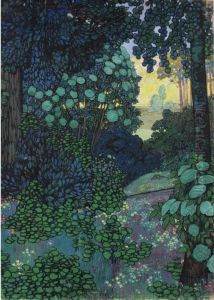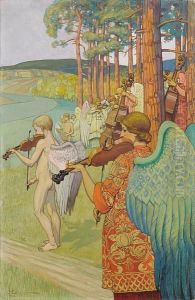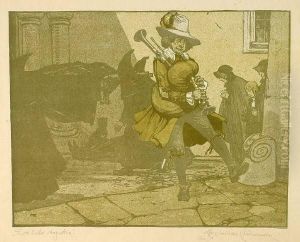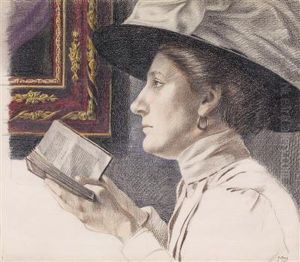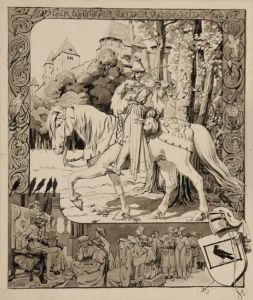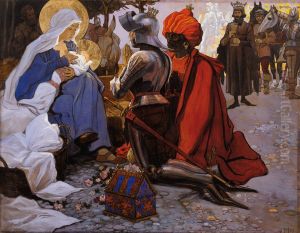Maximilian Liebenwein Paintings
Maximilian Liebenwein was an Austrian-German artist, illustrator, and graphic designer, recognized for his contributions to the Jugendstil movement, the German counterpart of Art Nouveau. Born on May 11, 1869, in the small town of Würzburg, Germany, he grew up in a period of artistic flourish and innovation that swept across Europe towards the end of the 19th century.
Liebenwein studied at the Academy of Fine Arts Munich, where he was influenced by the academic painting traditions of the time. However, as his style developed, he became increasingly drawn to the emerging aesthetic of Jugendstil, characterized by its organic lines, elegant forms, and often, thematic engagement with nature and mythology. He was also influenced by Symbolism and the Pre-Raphaelite Brotherhood, embedding his works with a sense of romanticism and spirituality.
Throughout his career, Liebenwein worked on a variety of projects, including book illustrations, graphic designs, frescoes, and paintings. His illustrations were often featured in popular magazines of the time, such as 'Jugend', which was a key publication for the Jugendstil movement and from which the style takes its name. Liebenwein's work was marked by its intricate detail, use of bold colors, and the frequent portrayal of fantastical and allegorical scenes.
In addition to his graphic work, Liebenwein was also known for his murals and participation in the decoration of public and private buildings, embracing the idea that art should be a part of everyday life. His approach to art was holistic, often working on the architectural space as a whole, integrating his murals and decorative elements into the structure of the buildings.
Maximilian Liebenwein's contribution to the world of art is significant not only because of his individual creations but also because of his role in the broader cultural movements of his time. He was a part of the wave that sought to break down the barriers between different art forms, promoting the idea that all crafts—whether painting, architecture, or the applied arts—held equal value.
Liebenwein passed away on July 17, 1926, in Merano, Italy. He left behind a legacy that is appreciated for its embodiment of the Jugendstil aesthetic and its contribution to the rich tapestry of European art history. His works continue to be studied and enjoyed for their beauty, intricacy, and the unique way they capture the spirit of a transformative era in art.
